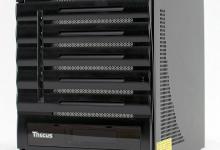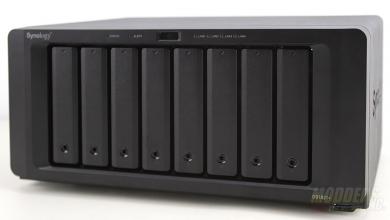Terra Master F2-210 NAS Review
Final Thoughts
The F2-210 is an entry-level NAS for SOHO users that will not break the bank as it is very affordable. Right now, Terra Master F2-210 retails for about $ 150 USD (diskless). This is an excellent price point for an entry-level home NAS. The hardware of F2-210 and very solid but that’s not what gives this device its superpowers. Perhaps the most important feature of F2-210 and similar devices by Terra Master is its underlying operating system, TOS (TerraMaster Operating System). This OS system uses user-friendly interfaces to give you control over the hardware so you can build your storage repository, create a private cloud or simple host a website. You can simply install and uninstall applications right from the Application Repository free of charge. Terra Master offers a set of useful applications such as Plex and MariaDB.
The performance of the F2-210 is what should be expected from a RAID 0/1 NAS enclosure with Gigabit connection. Looking at my benchmarks I was able to use most of my Gigabit connection between the PC and the NAS. Do note that write speeds to the NAS were slower in RAID 1 configuration than in RAID 0.
Overall F2-210 is a good starting point for personal storage. If you planning to store images and video files for streaming this device might be a good fit. However, I would like to recommend a NAS that has four bays as you can potentially use a minimum of RAID 5 (or better) configuration and protect your data better than RAID 1 which only gives you a fault tolerance of one.











Great post. In motherboard is possible solder two more RAM chips??
Is it possible? Of course. Humanly, probably not.
I strongly recommend to NOT to solder anything to this board yourself.
I bought this device in May 2020. It worked out of the box in RAID1 configuration, but it was unable to put disks in spindown. I really wanted to have an always on device, but I did not want to burn 26W and spin the disks when idle. This disk consumes ~1A from 12V (~12W) when disks are spinning and ~0.4A (~5W) when disks are stopped. It has latest TOS 4.1.24, which actually is OpenWRT, with a javascript web interface written on top of it.
The reason why the disks were not stopping was that the entire OS is residing on the disks and *surprise* it is configured to write information and error logs into a disk file. Because the designers forgot to disable log, it spins the disks every time one logs in, opens user interface and also renews IP address from your home DHCP server. If this happens within 30min, the disks never stop. They also have few bugs in configuration so the error messages which sometime pop up from Samba or IPtables happen to spin up disks too.
When using DHCP server at home, set the lease time to long interval because NAS will refresh lease half-way in the validity time (1hr lease will spin the disks permanently because the minimum timeout is 30min when set from browser interface).
I may only guess that the designers put the internal flash drive with the intent to place logs and other frequently accessed information on this drive; it is mapped as /mnt/usb disk and shows 120MB of free space. But because the mount point is on HDD, the access to flash also spins up the disks!
The disks will be also woken by the “Apps” which may be optionally installed, like Google Drive Sync and DLNA server. These applications are rather handy, and installation is easy. Needless to say, it can be a full featured Web (multiple virtual servers), FTP, NFS, SVN, Git, Docker and few more servers. It is a real decent performance Linux machine. But be prepared that the disks may/will be spinning all the time.
When fresh HDDs are installed, (I used Seagate IronWolf 4TB), it takes 24-40hours to build the RAID journal. During this time the box will produce head move sounds continuously, this is unexpected, but normal.
It is possible to log on the TOS via SSH terminal and also browse, copy and edit files from a PC using WinSCP utility. This way one familiar with Linux internals will be able to tweak the configuration files to modify the low level configuration. After two days of studying, I managed to configure it in staying in mostly low power state when idle.
There is a debate if the NAS disks are more reliable when permanently spinning, but when nobody accesses the box at night, the standby low power and low noise mode is very desirable.
In summary, the box is solid, flexible, and has good price/performance, but requires some work to improve their TOS configuration and fix the bugs.